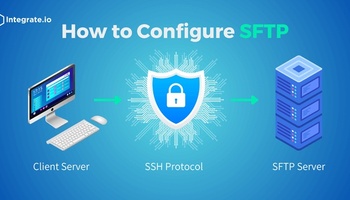- Poor Data Privacy Training
- Mixing Sensitive Data into Data Sets
- Collecting More Data Than Necessary
- Moving Data Between Regions
- Lack of Data Encryption in Data Pipelines
- Falling Behind on User Account Management
- No Standardization for Data-Related Processes
- Moving Sensitive Data to Unsecured Devices
Organizations have access to massive amounts of data, but they don’t always give enough thought to how they’re going to keep it private and protected. Dozens of data privacy regulations are in effect or in development globally, and the average consumer is learning more about how much of their data gets collected and used by businesses. For this reason, companies need to focus on keeping data safe while it's under their control, but it’s easy to make mistakes. Here are some common ways that companies fail to handle data properly:
Poor Data Privacy Training
Workers may not have sufficient training to understand when they’re making mistakes with data. If they don’t know the best practices for working with different types of data, they might disclose sensitive information or store files in an unacceptable location.
Data literacy is an important part of succeeding if you're a data-driven organization. This skill set is relevant at all levels. Role-appropriate training pinpoints the type of data relevant to a specific worker and makes them aware of what they can and can’t do with it.
Data privacy training is a continual process, as the landscape changes constantly. Always make sure that the information a worker uses for daily operations and any changes to relevant data privacy regulations is up-to-date.
Mixing Sensitive Data into Data Sets
Is sensitive data mixing in with other data categories? This situation may occur when an organization’s data pipeline doesn’t properly filter out or mask protected data, if a worker accidentally accessed sensitive data in an application or if the wrong data transfers into a database, data lake, or data warehouse.
Fine-tuned control over a data pipeline and using a solution that can automatically remove or mask sensitive data will reduce these occurrences. Automated data pipelines can also lessen the potential for human error that may happen when handling sensitive data.
Collecting More Data Than Necessary
Organizations may be used to gathering as much data as possible from customers, as well as enriching their data with external sources. However, when a company is working with that much data, it probably has more sensitive information than it needs.
By cutting down on data collection, you can reduce the complexity of your data and make the misuse of sensitive data less likely. Some data privacy regulations, such as the GDPR in the EU, also require businesses to adhere to permissible rules when collecting data. Organizations that fall under this regulation have to explain why they’re collecting the data and how they will use it.
You should regularly review the type of data you collect to ensure you are only gathering the bare minimum of sensitive data. As new data types and technology enter the market, an organization's data governance strategy must adapt to the new conditions.
Moving Data Between Regions
Cloud-based data stores and platforms bring a lot of value to an organization, but they can lead to issues with data privacy regulations. If sensitive data moves from on-premises to a cloud database in a different country, your business may fall out of compliance or find itself governed by a different set of rules.
Before transferring data to another geographic location, organizations should determine whether they’re able to do so safely. This step can help to avoid costly fines and any other penalties that come from a lack of compliance.
Lack of Data Encryption in Data Pipelines
As data moves from its source to a data warehouse, data lake or another destination, it needs proper protection. Determined attackers could intercept the data in transit, and if it’s not encrypted, they can view the sensitive data.
Enterprises of all sizes should consider how data may suffer exposure via data pipelines, the type of encryption needed to keep the info safe, and how to reduce the risk of a potential breach when it’s in transit, in use, or at rest.
Falling Behind on User Account Management
Sensitive data exposure can be accidental, as unauthorized users may have access to data sets they don’t need to perform their job duties. Too much access to data not only puts privacy at risk but also makes it harder for workers to get the information they need. Inactive user accounts also need strict management. Attackers may try to gain access to ex-employee accounts or those used by third-party vendors.
By staying on top of user accounts and how they interact with data, organizations can gain better control and visibility into their data.
No Standardization for Data-related Processes
Is every department and team using their own data processes and tools? A lack of standardization leads to exploitable security holes, poor productivity and a lack of transparency in how organizations use data. Essential privacy notices or data breach notifications may not go out as expected, or an individual might have trouble requesting the deletion of sensitive data.
Business process standardization reduces complexity, addresses inefficiencies, and makes it easier to implement data privacy measures organization-wide. If data privacy regulations change in the future, companies can quickly roll out any adjustments to meet the new requirements.
Moving Sensitive Data to Unsecured Devices
Because of the Pandemic, many businesses now have a full or partial remote workforce, which has created a working environment that can lead to sensitive data being moved outside of protected systems. If a worker moves this type of data to a poorly secured home computer, for example, that data could be at risk.
Strict policies on how to access data, Bring Your Own Device policies that mandate specific security measures, and monitoring the flow of data can reduce data privacy risks. For companies that had to create remote work policies and procedures quickly to respond to the pandemic, it’s important to revisit these changes to make any necessary improvements.
To expand on work-from-home consequences, saving data to unauthorized cloud storage accounts or sending it to a personal email address can also cause data privacy concerns. Some systems prevent these files from being moved to external locations, or they may restrict the locations from where any employee can access them.
Addressing Data Privacy Problems with Extract, Transform, Load (ETL) Technology
Organizations have to walk a fine line between using data sets to better their business and keeping that data safe. Companies that use business intelligence tools may struggle with analyzing data sets that involve large volumes of sensitive information, as they can’t use it as-is without compromising its privacy.
Extract, Transform, Load solutions such as Integrate.io allow you to protect data privacy even as you unlock valuable insights. ETL technology does this by transforming sensitive data before it moves to a data store for analysis. Data managers can mask it, anonymize it or take other actions that allow data scientists and developers to work with real-world data sets. Integrate.io complies with data privacy regulations, encrypts the data as it moves through the pipeline, and ensures that only the right data loads into your data lake or warehouse. Try our 14-day trial and learn how Integrate.io can help you.












